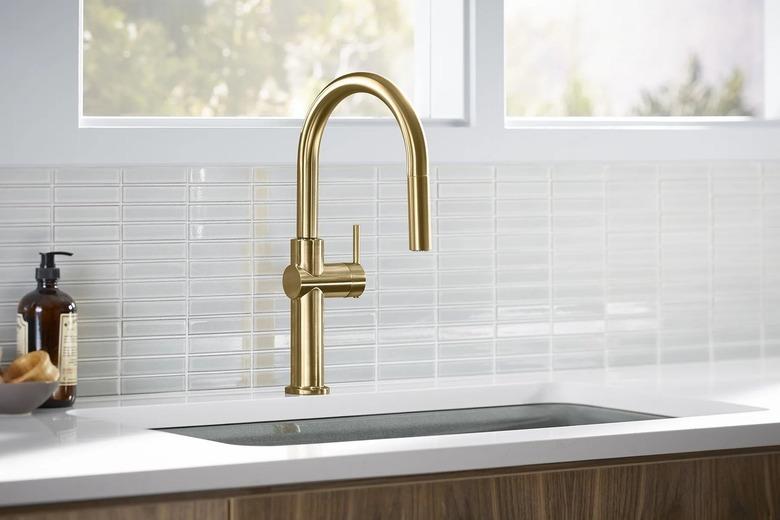How To Tighten A Loose Kohler Faucet Handle
We may receive a commission on purchases made from links.
You have to hand it to Kohler: The faucet maker has come up with some ingenious ways to hide the set screws on its kitchen and bathroom faucets, placing them under the faucet lever, underneath a removable dome top, and even omitting them altogether. Users are left to ponder the imponderable: How is it possible to tighten a loose bathroom faucet handle when there's no set screw to tighten? Here's how to get the job done.
How to Tighten the Set Screw
How to Tighten the Set Screw
Actually, most Kohler faucets do have set screws. If your sink handle is loose and the faucet is a Kohler, all you have to do is look carefully for it and tighten it. Use a Phillips screwdriver or a 1/8- or 3/32-inch hex wrench, depending on the model. On most — but not all — kitchen or bathroom Kohler faucets that have set screws, you'll find a decorative cap that you have to pry off with a flat-head screwdriver to access the set screw. Some of the places to look for this cap (or the screw itself, if there's no cap) include:
- Underneath the lever
- On the collar attached to the lever, usually on the same side as the lever
- On the post attached to the lever
How to Tighten a Faucet With No Set Screw
How to Tighten a Faucet With No Set Screw
If you have a Forte widespread bathroom faucet, and one of the handles should start wobbling, you're not going to be able to find a set screw to tighten no matter how hard you look. That's because there isn't one.
Each of the two Forte faucet handles rests on top of a "decorative flared piece," as described by Kohler on its troubleshooting page. To remove either handle:
- Hold it steady with one hand while you turn this flared piece counterclockwise to unscrew it from its threaded base.
- As a result, to tighten the handle, you turn this flared piece clockwise until it won't turn any further.
The same procedure applies to virtually all of Kohler's widespread bathroom faucet models, including the Bancroft, Devonshire, Memoirs, and many more. Basically, if the faucet is a widespread model, and you don't see a set screw, you tighten the flared piece. This is true for faucets made by other manufacturers as well.
Troubleshooting the Set Screw
Troubleshooting the Set Screw
Set screws corrode over time, which not only makes them difficult to turn but also deteriorates the threads. If you can't turn the set screw by applying a reasonable amount of force to the screwdriver or hex wrench, don't try to force it, or you'll strip the head. Spray some lubricant, such as WD-40, on the screw and wait 10 minutes before trying again.
If you do strip the screw, you can usually extract it by drilling about 1/8 inch into it with a 1/8-inch drill bit, then reversing the drill and allowing it to back out the screw. For this to work, the bit must have bitten into the metal and be locked in. Don't pull it out before reversing the drill.
Sometimes the sink handle is loose, and you can turn the set screw, but it doesn't stop the handle from wobbling. The threads are probably stripped. In this case, the best strategy is to pull off the handle, extract the set screw any way you can and replace it with a new one.
